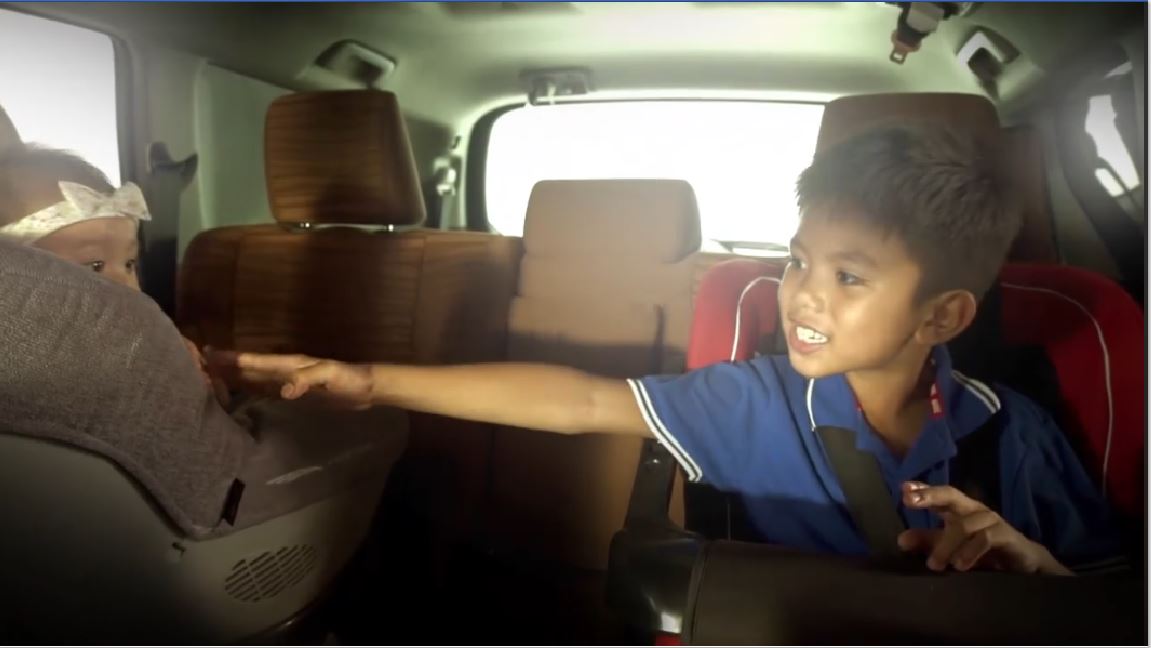
The Child Safety in Motor Vehicles Act of 2019 is all set for implementation as the rules and regulations for private vehicles carrying children were recently signed.
The Act stipulates the use of Child Restraint System (CRS) in accordance with international standards accepted by the United Nations.
“The IRR has just been recently signed and approved thus the need to have this law disseminated and for the public to be aware and to follow this”, said Land Transportation Office Law Enforcement Unit Deputy Director Roberto Valerio in the PIA report released on March 2, 2020.
The Child Safety Implementing Rules and Regulations identify the Motor vehicles covered under the Act, the types of CRS, and its proper installation.
Also covered are the Department of Transportation (DOTr) and Department of Trade and Industry Certification Training Programs for law enforcers, product inspectors, employees, and agents of manufacturers, distributors, sellers, and importers of the CRS, along with the regulation of the manufacture, importation, and distribution of CRS.
The IRR also identifies the authorities responsible for the enforcement of the law and the phases of implementation.
CHILD SAFETY LAW
The Child Safety in Motor Vehicles Act requires the following:
- No child twelve (12) years and below of age shall be allowed to sit in a front seat of a motor vehicle with a running engine or while such child is being transported in any road, street or highway unless the child is at least one hundred fifty (150) centimeters or (fifty-nine) inches in height.
- CRS should be appropriate to the child’s age, height and weight.
- A child must not be left unaccompanied by an adult in a motor vehicle.
Any violating drivers shall be fined One thousand pesos (1,000) for the first offense, Two thousand pesos (2,000) for the second offense, Five thousand pesos (5,000) and suspension of the driver’s license for a period of one (1) year for the third and succeeding offenses.
Any driver who allows the use of substandard and/or expired child restraint system or permit the use of CSR that does not bear the PS mark or the ICC sticker and certificate shall be fined One thousand pesos (1,000) for the first offense, Three thousand pesos (3000) for the second offense and Five thousand pesos (5000) and the suspension of the driver’s license for a period of one (1) year for the third and succeeding offense.
All manufacturers, importers, distributors, and sellers of child restraint systems are required to secure a Philippine Standards (PS) mark license or Import Clearance Certificate (ICC) license prior to the marketing, sale, and distribution of their products from the Bureau of Product Standards (BPS). Violators shall be punished with a fine of not less than Fifty thousand pesos (50,000) but not more than One hundred thousand pesos (100,000) for each and every child restraint system product manufactured, distributed, imported and/or sold without prejudice to other penalties imposed under RA no. 7394 or the “Consumer Act of the Philippines”.
The DOTr is also conducting a study requiring the use of CRS in public utility vehicles.
Another child safety program was recently launched in Marikina City, with the Philippines’ first fire safety program for school children.
The Department of Education had also partnered with Globe Telecom for a Digital Safety Program for children using the internet.
The Department of Tourism has also led various government agencies in the signing of a covenant that seeks to ensure better protection for women and children involved in the country’s tourism industries.
WATCH this Child Safety video and TELL US in the comments below how you keep your children safe while riding motor vehicles?
Want to know how to be a Proud Pinoy? Like, Follow, Subscribe to GoodNewsPilipinas.com and our socials Facebook, Twitter, Instagram, Good News Pilipinas! TV on YouTube, for new good story notifications and e-mail newsletters for updates on more Filipino Pride stories










